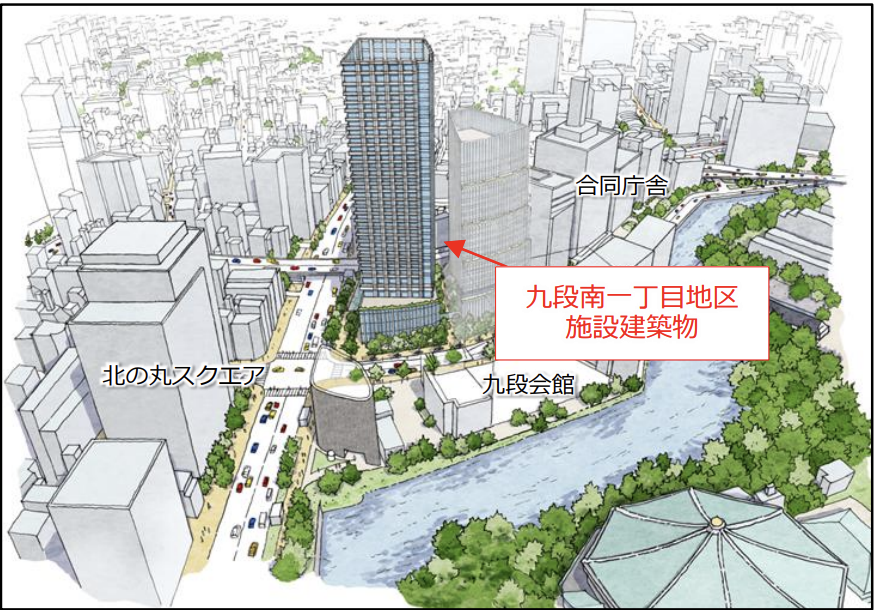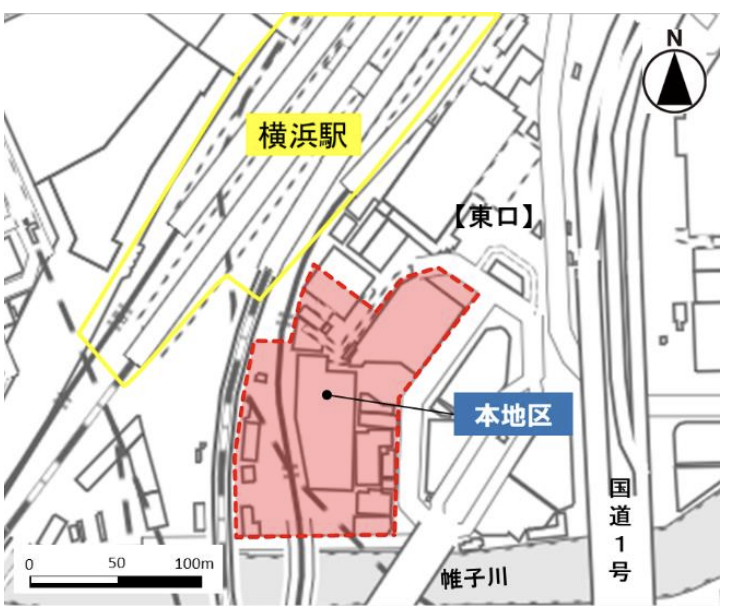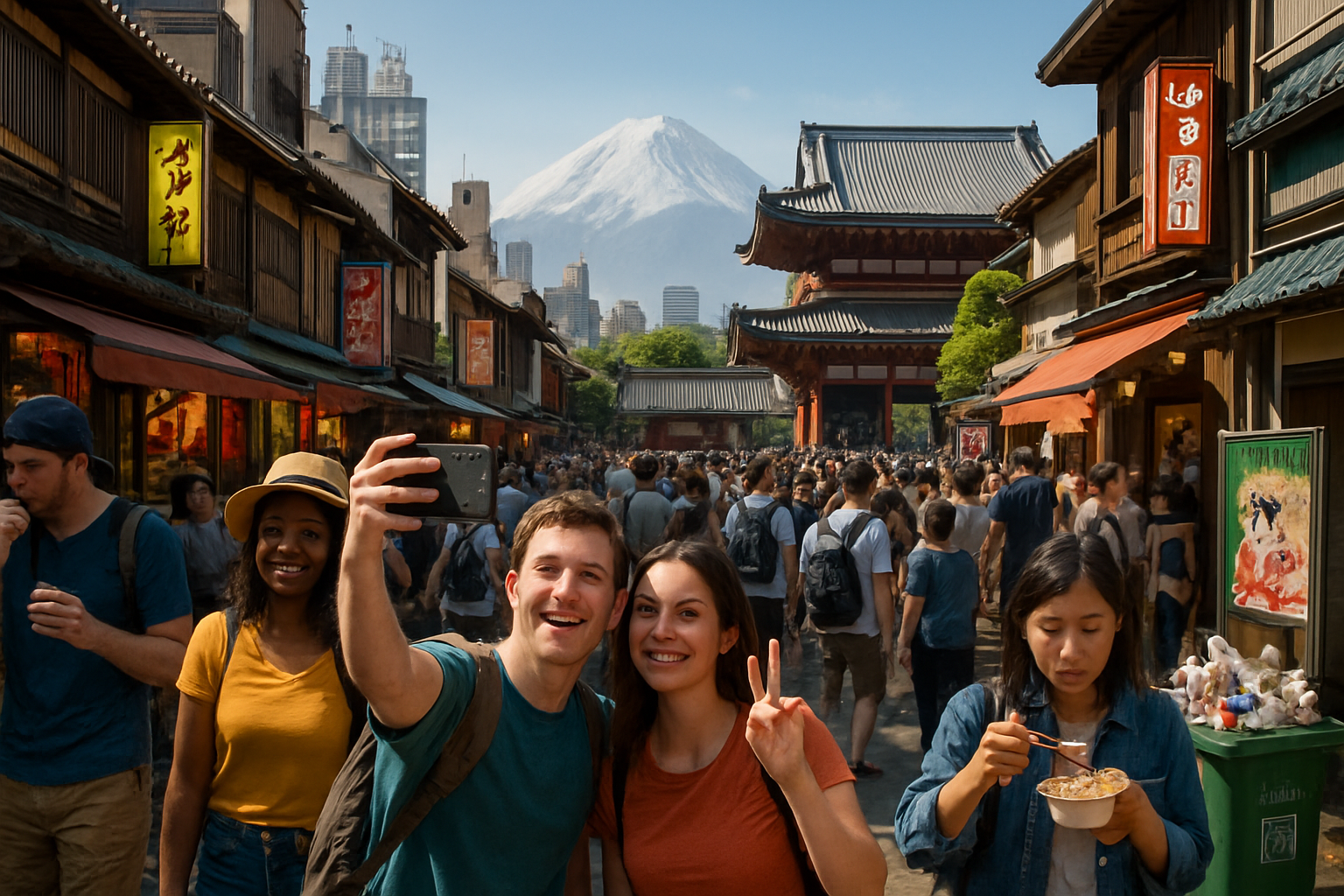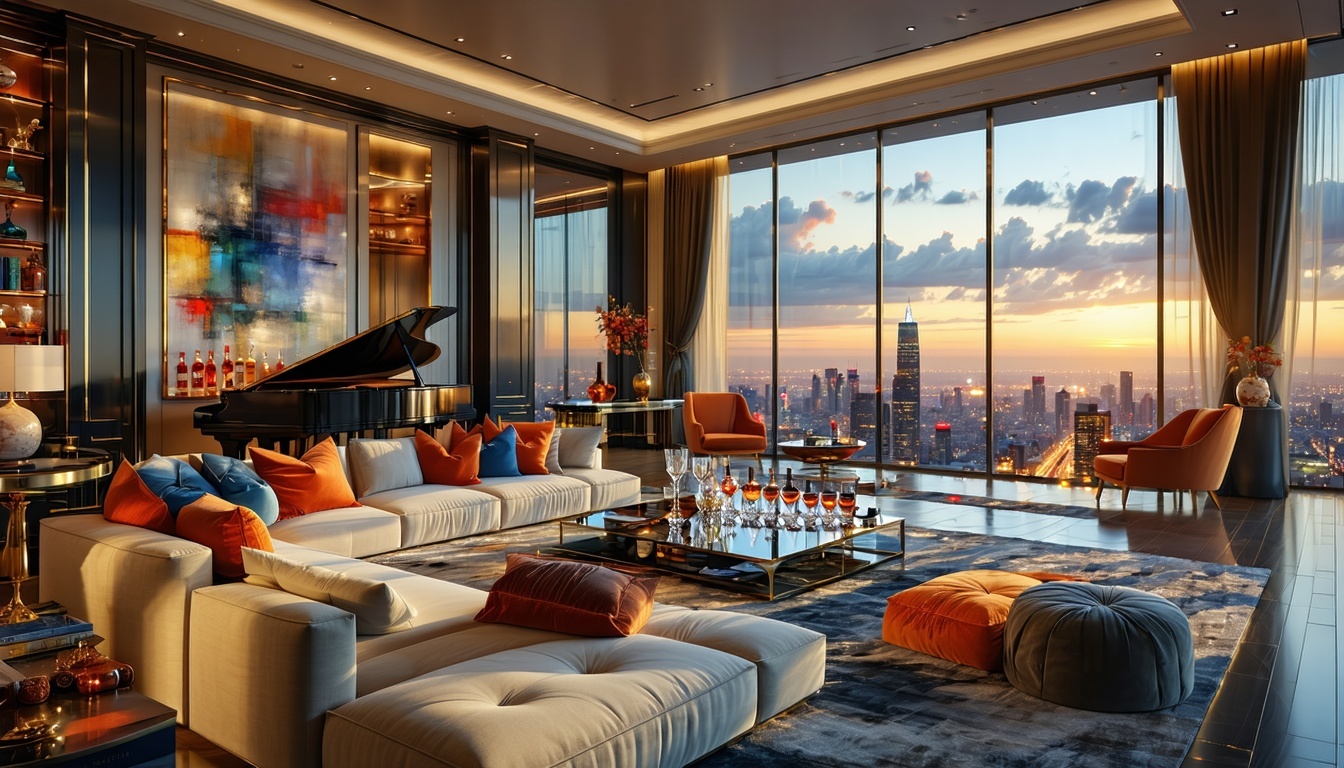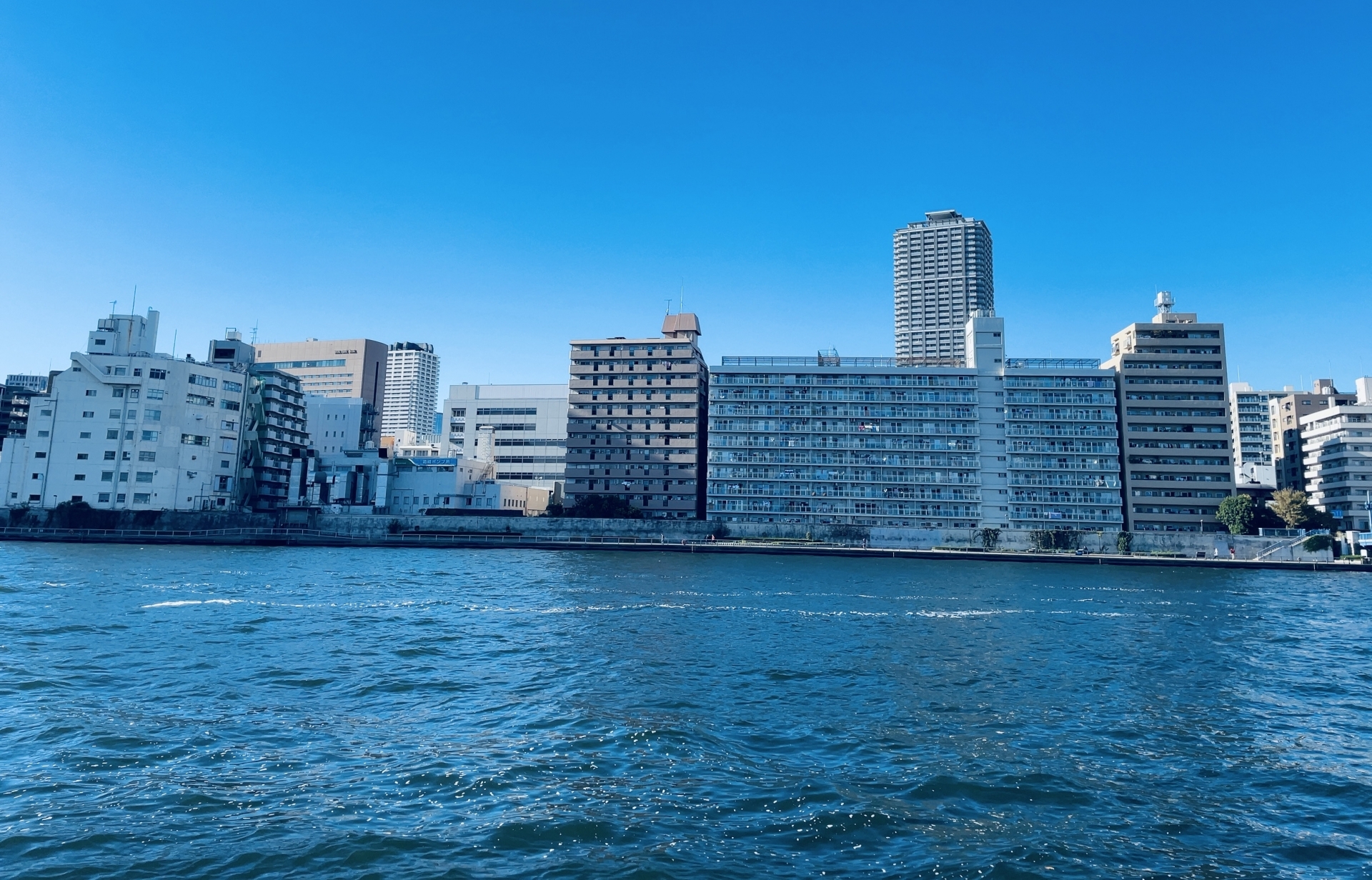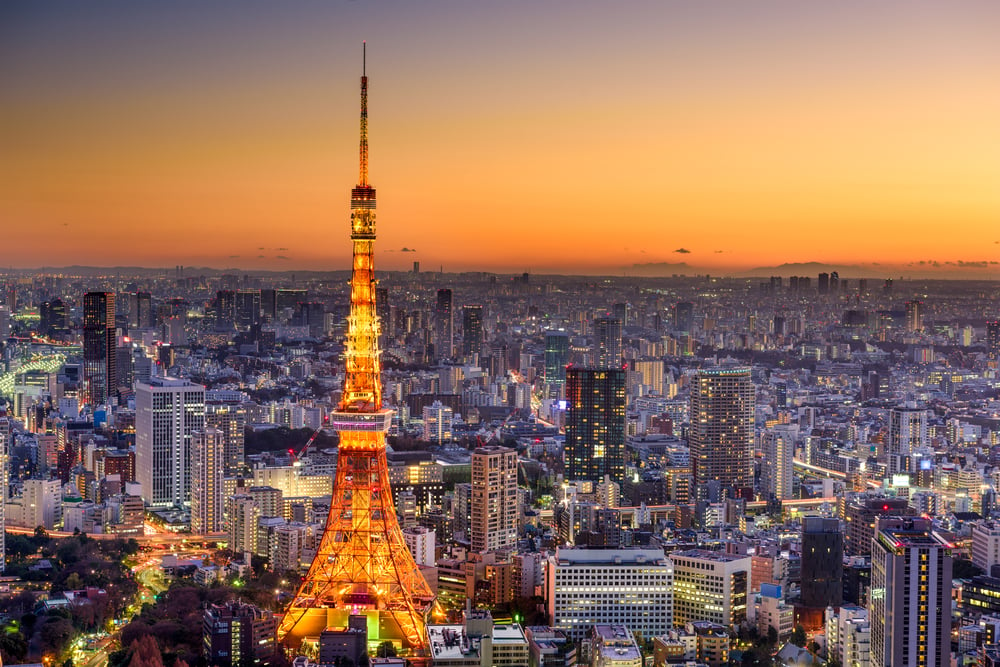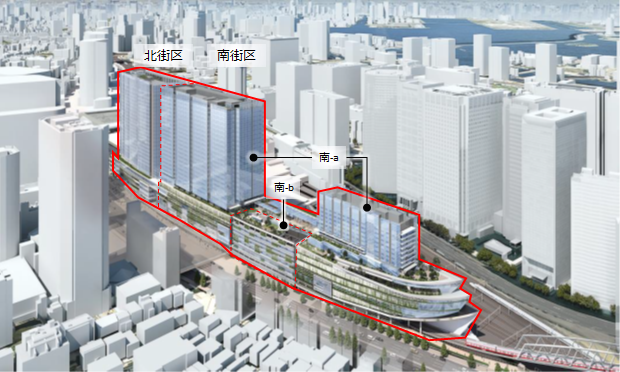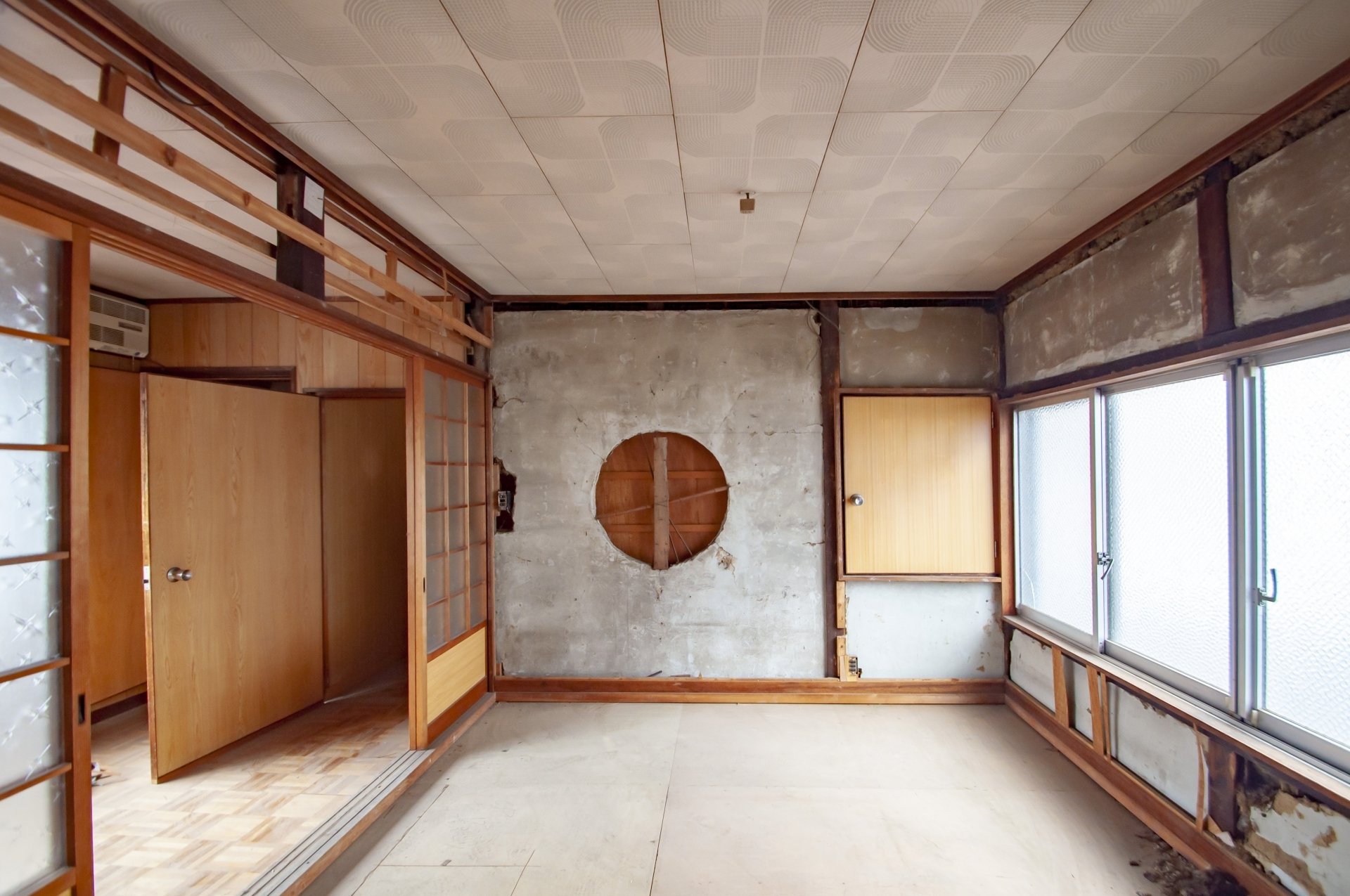When Japan's ultra-high-net-worth individuals consider where to invest in additional real estate, they are interested in areas with high profitability, asset value, and potential. This article introduces areas where high yields and stable income can be expected, where value is expected to increase due to urban redevelopment and infrastructure improvement, and where the location is rare, branded, and suitable for asset preservation. We also explain the common points that ultra-high-net-worth individuals emphasize when selecting a property.
| Regions | Main Attractions | Expected Events and Developments |
|---|---|---|
| Tokyo | Stable profitability, scarcity of high-end areas | Toranomon and Azabudai projects, Shibuya redevelopment, Shinagawa Linear Shinkansen opening |
| Osaka | Growth potential, high yield | Osaka-Kansai Expo, opening of IR (integrated resort) |
| Nagoya | Integration with Tokyo, room for asset value appreciation | Opening of Linear Central Shinkansen Line, redevelopment of Sakae and Kinjo Pier |
| Fukuoka | Compact city, high land price appreciation rate | Tenjin Big Bang, Hakata Connected |
| Sapporo | Urban growth, undervalued and high yield | Hokkaido Shinkansen Sapporo extension, redevelopment around Sapporo Station |
| Karuizawa | Rare value as a high-end summer resort | Increased demand for vacation homes due to the spread of remote work |
| Hayama | Excellent seaside location, historical brand | Rare value due to development restrictions |
| Ashiya | High-end residential area, excellent property preservation | Value preservation through landscape preservation and mansion ordinance |
Tokyo: Stable income and asset value in premium areas in central Tokyo

Tokyo, the capital of Japan, is a prime real estate investment area for the ultra-high-net-worth class. Tokyo's urban center properties are estimated to yield approximately 3.5% to 4%, which is higher than yields in major Chinese cities such as Beijing and Shanghai (less than 2%), making it a stable source of rental income. In particular, the recent depreciation of the yen has attracted attention from overseas investors as an "undervalued and stable asset," and a large influx of funds continues.
The most popular areas for ultra-high-net-worth individuals are the "prestigious areas in the heart of Tokyo," even in the 23 wards of Tokyo. Specifically, Minato Ward (Akasaka, Roppongi, Aoyama, etc.), Shibuya Ward (Hiroo, Ebisu, Daikanyama, etc.), and Chiyoda Ward (Bancho, Kasumigaseki area, etc.) are representative luxury residential areas. These areas are home to a forest of high-rise tower condominiums for the affluent class, many of which feature views of Tokyo Tower and the city's nightscape, as well as properties with excellent brand recognition unique to the area. For example, penthouses (top-floor units) in the three main wards of central Tokyo are rare, and since the supply is limited, asset values are easily maintained.
In addition, Tokyo has been seeing a series of large-scale urban redevelopment projects underway, boosting the value of central Tokyo areas. Recently completed projects such as the Toranomon-Azabudai Project (Toranomon Hills area) and the redevelopment of the Shibuya Station area have led to the supply of luxury residences with state-of-the-art facilities. In addition, the Shinagawa Station area is scheduled to undergo redevelopment in preparation for the scheduled opening of the Linear Central Shinkansen Line, which is expected to further enhance urban functions. New luxury condominiums in the city center created by such redevelopment are in high demand from wealthy foreign residents, further solidifying the area's position as a brand area.
Osaka: A fast-growing metropolitan area and future potential with Expo '70 and IR

Osaka, Japan's second largest economic city, is also a hot investment destination for high-net-worth individuals. Land prices in Osaka have been on an upward trend in recent years, and the official land price for residential land in Osaka City as of 2024 showed a significant increase of 5.8% over the previous year. This is an increase from the 3.7% increase in the previous year. In particular, expectations for the Osaka-Kansai Expo to be held in 2025 and the Integrated Resort (IR) scheduled to open in 2030 are boosting the market. Infrastructure improvements, including the extension of the subway line to Yumeshima, where the Expo will be held, and the opening of a new train station, are progressing, and land prices in the Osaka Bay area are rising noticeably even before the event. In fact, in central Osaka, commercial land prices have soared in the Minami (Namba/Shinsaibashi) area, which is popular among tourists visiting Japan, with commercial land prices in Dotonbori recording an outstanding 22.6% year-on-year increase. With the recovery of inbound demand and the effects of the Expo, Osaka has all the ingredients for a bright medium-term outlook.
As an investment area, the Umeda area around Osaka Station boasts stable popularity. The redevelopment project called "Umekita 2nd Phase" in Umeda has attracted attention from both business and residential sectors with the construction of new high-rise buildings and a large-scale green space called "Grand Green Osaka". There is strong demand for rentals, and there is a high demand for high-end condominiums with high rents. In addition, in the vicinity of the central business districts of Nakanoshima andHommachi, tower condominiums have been developed one after another for wealthy residents. As a result, the number of properties where residents can enjoy the convenience of "work and residence in close proximity" is increasing, and long-term asset values are expected to increase.
Compared to Tokyo, real estate prices in Osaka are relatively inexpensive and surface yields tend to be slightly higher. For this reason, some high-net-worth individuals are turning their attention to "regional cities with room for growth rather than soaring urban centers," and in fact, some wealthy Kansai residents are purchasing properties in other cities , such as Sapporo (see below). However, even within Osaka City, there are many properties with stable asset values in the Hokusetsu area (Toyonaka City, Suita City, etc.) and high-end residential areas in the Hanshin area, which are increasingly being considered from the perspective of inheritance and asset preservation. Overall, the Osaka area is an area with high expectations for the future of the real estate market, with the big events of Expo '70 and the opening of the IR.
Nagoya: Chubu Economic Region in the Spotlight with Linear Shinkansen Line

Nagoya, the core city of the Chubu region, is another area whose future development cannot be overlooked. Home to the world-renowned Toyota Motor Corporation, Nagoya has a solid economic foundation, and the Linear Chuo Shinkansen, scheduled to open in 2027, will connect Tokyo and Nagoya in about 40 minutes. The opening of the Linear Shinkansen is expected to dramatically increase Nagoya's urban value and is attracting the keenest attention from wealthy investors nationwide. In fact, there has been a series of luxury condominium developments in Nagoya with sales prices exceeding 100 million yen, all of which are selling well. As property prices rise due to soaring construction costs, "wealthy people who value their assets" are aggressively purchasing condominiums in central city areas and near train stations, and developers are competing to secure land for their projects. Land prices are rising from the city center to the areas around stations throughout the city, and Nagoya as a whole is becoming more and more active.
In the Meieki area around Nagoya Station , a forest of skyscrapers has sprung up in recent years, creating new landmarks one after another: the JR Gate Tower (opened in 2017), the reconstruction of the Dainagoya Building, and the redevelopment of the Sasajima Live area have created a concentration of the latest commercial facilities, offices and residences within walking distance and directly connected to the station. In addition, the redevelopment of the Sakae area in Nagoya City (including the redevelopment of Hisaya-odori Park) and the concept of attracting IRs to Kinjo Pier are expected to increase the city's ability to attract visitors in the future. These factors have led real estate investors to re-evaluate Nagoya as a city that can be expected to increase in value in the future.
Real estate in the Nagoya area is undervalued compared to Tokyo and Osaka, yet there is stable demand. While many regional cities face the challenge of declining population, Nagoya remains a metropolitan area with a population of approximately 2.3 million, and the rental market is strong. In addition, Nagoya's asset value may increase further in the future as the city's integration with the Tokyo metropolitan area progresses due to the effects of the linear transportation system. Nagoya is a strong choice as a place to diversify your real estate portfolio.
Fukuoka: A growing city with one of the highest rates of land price appreciation

Fukuoka City, the largest city in Kyushu, is attracting attention both domestically and internationally as a "young and vibrant city" in which to invest. According to a survey by the Ministry of Land, Infrastructure, Transport and Tourism, land prices in Fukuoka City have continued to rise in recent years for both residential and commercial land, and the city has one of the highest growth rates among major cities. The year-on-year rate of increase in official land prices in 2021 was 4.4% for residential land (second in Japan after Sapporo) and 7.7% for commercial land (top in Japan). In the commercial land price increase ranking, sites in Fukuoka City's Chuo and Hakata wards dominate the list, making them the areas with the greatest growth potential in Japan.
This is due to Fukuoka City's high quality of life and unique urban policies. Fukuoka is known as a "compact city," with urban functions concentrated in the center of the city and convenient transportation, while at the same time being blessed with nature and food culture, making it a "comfortable place to live. Furthermore, the city's large-scale projects, "Tenjin Big Bang" (large-scale redevelopment of the Tenjin area) and "Hakata Connected" (redevelopment of the area around Hakata Station), have led to the reconstruction of office and commercial buildings and improved the city's appearance and functions. These redevelopment projects are expected to boost employment and increase the number of people interacting with the area, which in turn will boost land prices and contribute to higher real estate values in the future.
Luxury housing for the wealthy is also increasing its presence in Fukuoka City. Along Keyaki-dori Street, which runs from the Akasaka and Kego areas to Ohori Park, around Josui-dori Street, and along Momodo in the Kaihin area, there are many luxury brand condominiums and large mansions built by Sekisui House, Mitsubishi Estate, and others. These properties combine easy access to the city center with a quiet living environment, and are attracting attention as "second homes" not only from local business executives, but also from affluent residents of Tokyo and other areas. Fukuoka City is expected to continue to develop due to population growth (encouraging migration from the Tokyo area and an influx of foreign students and labor from Asia), making it an attractive growth city from a real estate investment perspective.
Sapporo: Northern hub in the spotlight for redevelopment and inbound tourism

Sapporo, the capital of Hokkaido, is the hub of northern Japan with a population of approximately 1.97 million. In recent years, Sapporo has recorded one of the highest land price appreciation rates in Japan, and the real estate market has been booming. 2022 saw the average price of new condominiums in Sapporo exceed the bubble period and reach a record high, but it is still pointed out that there is room for asset value appreciation in anticipation of the Hokkaido Shinkansen extension to Sapporo (scheduled to open in 2030) and redevelopment in the city center. It is pointed out that there is still room for property values to increase, as the Hokkaido Shinkansen line extension to Sapporo (scheduled to open in 2030) and redevelopment of the city center are still in the works. In fact, some wealthy Osaka residents have been eyeing Sapporo as an "inexpensive regional city" and have purchased large tower condominiums in the area. This is due to the fact that property prices in Sapporo are relatively affordable and yields are easy to secure, compared to the high property prices in metropolitan areas such as Tokyo and Osaka. In addition, Sapporo's accessibility will be improved with the opening of the Shinkansen bullet train in the future, and the city's own growth potential is also highly regarded.
In central Sapporo, a large-scale redevelopment project is underway around Sapporo Station. The redevelopment project on the north side of Sapporo Station will include the construction of a high-rise condominium tower, "ONE Sapporo Station Tower," which will be a new landmark directly connected to the station. In terms of office space, new buildings are being constructed one after another in the Sapporo Ekimae Dori and Odori Koen areas, and companies are actively moving into Sapporo. The rent for office space in Sapporo is less than half that of Marunouchi in Tokyo and 70% that of Umeda in Osaka, and the abundance of human resources has led to a rush of companies from outside Hokkaido to set up in Sapporo. Such corporate expansion and redevelopment are creating jobs and supporting housing demand.
Furthermore, looking at Hokkaido as a whole, the presence of Niseko, known as a world-class resort, is also having a positive impact on the Sapporo real estate market. The weak yen in the 2020s has also provided a tailwind for foreign investment money to flow into Hokkaido, and Sapporo is attracting attention as a base for long-term stays of wealthy people by attracting high-end hotels. Sapporo is also attracting attention as a base for wealthy people to stay for long periods of time by attracting luxury hotels. After the Shinkansen bullet train starts service, the Sapporo - Niseko route will be connected in less than 30 minutes, and Sapporo may further increase its value as a hub for resort tourism in Hokkaido in the future.
In general, Sapporo has two aspects: it is a government ordinance city with a well-developed infrastructure for daily life, and it is a market with high growth potential. Real estate prices are expected to continue to rise as local demand and investment demand from the outside intersect. In terms of rental yields, the area can be said to be an area where it is easy to secure a certain level of yield, as the rent level is firm relative to the property price. Sapporo is an attractive investment destination for the portfolios of ultra-high-net-worth individuals, offering a combination of profitability and potential.
Karuizawa: Rare Value of a Traditional Luxury Summer Resort

Karuizawa, in Nagano Prefecture, is the first place that comes to the top of the list as a popular luxury residential area for ultra-high-net-worth individuals outside of the major Tokyo metropolitan area. Karuizawa has developed since the Meiji period (1868-1912) as one of Japan's leading summer and holiday resort areas, and is beloved by political and financial figures as well as foreign celebrities. Today, Karuizawa still holds an unshakeable position as "Japan's premier vacation home resort," and the Karuizawa brand has been maintained for more than 100 years, and its property values have not declined since the collapse of the bubble economy. In fact, Karuizawa has shown an upward trend in public land prices in recent years, with average public land prices in 2023 up 6.93% from the previous year and standard land prices up 7.92% from the previous year. This is due to the growing demand for vacation homes resulting from the spread of remote work and increased demand for tourism, as well as the fact that Karuizawa is a rare area with a limited supply of land.
Karuizawa's appeal is its combination of accessibility from the Tokyo metropolitan area and its rich natural environment. The convenience of being only a little over an hour from Tokyo by Shinkansen bullet train makes it possible to enjoy a "dual life in Karuizawa on weekends. In fact, the Corona Disaster has accelerated the trend of wealthy Tokyo-based residents moving to Karuizawa for long-term stays and relocations, resulting in approximately 300 villa sales and purchases over the three-year period from 2020 to 2022. Experts believe that the rising land prices in Karuizawa are supported by demand from wealthy Tokyo residents, and unless land prices in central Tokyo decline significantly, Karuizawa will also continue to see an upward trend.
Karuizawa has several popular vacation home areas, including Old Karuizawa, Minami Karuizawa, Chigataki, and the Hoshino area, each with its own unique vacation home culture. For example, there are many historic villas in the Old Karuizawa area, the forested Minamigaoka and Minamihara areas, and the Nakakaruizawa to Hoshino areas dotted with luxury resort hotels and golf courses. All of these areas are characterized by large plots of land with spacious residences, and the landscape and environment are strictly protected. The natural environment itself is regarded as the greatest asset value, and the wealthy are reaffirming their sense of value that "rich nature is the most luxurious". Karuizawa will continue to be the king of the vacation home market, attracting wealthy people with its rarity and brand power.
Hayama: A historic seaside mansion and unique location

The town of Hayama in Kanagawa Prefecture is an exclusive residential and vacation home community located on the west coast of the Miura Peninsula. Hayama has been rooted in the villa culture since the Meiji period (1868-1912), and is especially known as the location of the "Hayama Imperial Villa" (a villa for the Emperor's retreat). Surrounded by the sea and mountains, the area is rich in nature, yet has a serenity and dignity that sets it apart from mere tourist destinations.
Hayama's greatest appeal lies in the rarity of its location. Due to its geographical location on the west side of the Miura Peninsula, many of the hills facing west offer a great view of the sunset over Sagami Bay and the silhouette of Mount Fuji, and the "Diamond Fuji" view. The westward view of the ocean is considered the ideal direction for a resort area, and Hayama is truly described as the "golden position on the west coast. The view of the gentle cove and green hills is unique, and the luxury of watching the sunset from a seaside villa is an experience that can only be found in Hayama.
Hayama has long been home to the villas of royalty, political and financial figures, and cultural figures, and this history has contributed to the refined atmosphere of the area. The town is home to the long-established luxury ryokan "Hayama Hotel Otowanomori" and the ryotei "Hikage Chaya," which have provided high-end service and gastronomic delights. Local vegetables and seafood are known as the "Hayama Brand," and are known for their high quality ingredients that have wowed the royal family and distinguished guests. This high quality of life infrastructure and food culture is one of the major advantages of a vacation home in Hayama.
Typical residential areas in Hayama include the Morito-kaigan and Isshiki Kaigan areas by the sea and the Shonan Kokusai-mura area on higher ground. Depending on the preferences of the ocean- and mountain-oriented affluent, some properties offer ocean views, while others offer privacy and seclusion in the deep green hills. In any case, Hayama is a small town with limited development and very little vacant land, making real estate extremely rare and valuable. Many assets are passed down from generation to generation through inheritance, and in most cases, if they are put on the market, they fetch high prices. From the perspective of asset preservation and succession, Hayama real estate is an attractive part of the portfolio for the ultra-wealthy.
Ashiya: Stable asset value of one of Japan's most exclusive residential areas

Ashiya City in Hyogo Prefecture is famous in the Kansai region as an upscale residential area that has traditionally attracted wealthy individuals. Rokurokuroso-cho in the northeastern part of Ashiya City is particularly exceptional, being called "the last luxury residential area in Japan," and its 38 hectares of mansions at the foot of beautiful mountains attracts attention from all over the country. Ashiya City has a history of focusing on landscape preservation as an "International Cultural Residential City," and Rokurokusocho has its own landscape and building regulations that are said to be the strictest in Japan. For example, when building a new house in Rokurokuso Town, conditions such as "only single-family houses, site area of 400 m2 or more, and building height of 10 m or less" are imposed, and this ordinance, commonly called "Gotei (mansions) Ordinance," maintains the townscape where only mansions can be built. As subdividing plots (subdivision) is also prohibited in principle, the view of luxurious low-rise residences lining a vast site is breathtaking and attracts many tourists to visit.
The land price level in Ashiya City as a whole has remained extremely high. In Ashiya, the area with the highest land price reaches 815,000 yen per square meter (=approx. 26.94 million yen per tsubo), and there is no end to the number of wealthy people who purchase real estate for its stable high asset value. The unit price per tsubo in Rokurokusocho is also one of the highest in Hyogo Prefecture, at approximately 687,000 yen per tsubo (≈ approximately 2.1 million yen per square meter) as of 2021, and it has been confirmed that the decline is small even as the property ages. In fact, there are many property buyers in Ashiya who place importance on asset quality, and in some cases, they build mansions with the aim of "protecting and increasing their assets, and leaving them to the next generation. Residences in Ashiya tend to be held for a long time, and the number of properties on the market itself is limited, so asset values are supported from the standpoint of supply and demand.
In addition to Rokurokusocho, there are several other high-end residential areas in Ashiya City. For example, Yamate-cho and Higashiyama-cho around JR Ashiya Station, and Shukugawa and Kurakuen (near the border with Nishinomiya City) along the Hankyu line are lush green and quiet residential areas. Ashiyahama, with its yacht harbor on the ocean side, is a popular area with luxury condominiums, although it is a planned city built on reclaimed land. Both areas tend to have a high percentage of affluent households due to their safety and high level of education. The "status" of Ashiya is an added value of the real estate itself, and is a typical example of an address becoming a brand.
Points that the ultra-wealthy place importance on when selecting a property
Finally, we will summarize the common points in property selection by the ultra-high-net-worth individuals, which are also applicable to the above-mentioned areas. They are not only concerned about the profitability and future potential of a property, but also about the quality and rarity of their living space. The following points can be cited as trends.
-
Rarity and brand power of the location: They tend to prefer areas where the address itself has a kind of status. They value rare locations where only a limited number of people can live, such as prestigious central Tokyo locations or historic high-end residential areas. Another major reason for the continued popularity of condominiums for the wealthy is the quality of the location.
-
Low-rise residences and ample space: In recent years, it has been said that "the truly wealthy choose low-rise condominiums over townhouses," and more and more prefer low-rise residences with quiet surroundings and little environmental change. For example, in Tokyo, low-rise condominiums in quiet areas such as Shirokanedai, Motoazabu, and Hiroo are rare, and their asset values are considered to be stable due to the favorable surrounding environment. Those who prefer detached houses also tend to seek mansions with privacy on large lots (in some cases, such as Rokurokusocho, a minimum lot size is set).
-
Views and openness: Affluent residents who choose tower condominiums in central Tokyo place great importance on the overwhelming views and sense of openness. Properties with excellent views, such as penthouses on the top floors overlooking Tokyo Bay or skyscrapers, are often recognized as being worth more than the market price, and in some cases sell for significantly more than the market price. On the other hand, in the suburbs and vacation home areas, people prefer to be able to enjoy the seasonal nature through the garden, or to have a view of the sea, mountains, or other scenery that is unique to the area.
-
Security and private space: For wealthy people, a safe and secure lifestyle is essential, and condominiums with 24-hour manned management, concierge services, and security facilities, combined with "hotel-like hospitality," remain highly popular. Even in detached houses, emphasis is placed on having a private residence space separated from the outside world by a gate or fence, and having a security system in place. Since measures against paparazzi are also necessary in the case of dignitaries and celebrities, a location that is out of sight and a high-level security system are important.
-
High-grade property size and specifications: Ultra-high net worth individuals do not compromise on the quality of the living space itself. For city center condominiums, they prefer maisonettes of nearly 200 square meters, one-floor units, and penthouses with high ceilings, etc. They also demand interiors with designer specifications and top-quality equipment and materials. In recent years, branded residences (condominiums for sale in partnership with luxury hotel brands) have been attracting increasing attention, and some of these properties are sold out immediately to the wealthy. In vacation homes as well, people tend to choose residences with fireplaces, home theaters, wine cellars, and other amenities that suit their tastes and interests.
As described above, real estate investment by the ultra-high-net-worth individuals is not limited to the mere pursuit of profits, but also involves "owning assets that match one's lifestyle and status. For this reason, investment tends to be concentrated in areas where not only high rental yields, but also brand value and future value can be expected to be maintained. Central areas of major cities such as Tokyo, Osaka, Nagoya, Fukuoka, and Sapporo, as well as high-end residential areas such as Karuizawa, Hayama, and Ashiya, which have historically been favored by the wealthy, are representative examples of areas that meet these conditions. The real estate portfolios selected by the ultra-high-net-worth individuals encompass a wide range of prime areas throughout Japan, and these assets are passed on to the next generation. The areas discussed in this report are expected to continue to maintain high values in the future as "the town of choice for the wealthy.

Daisuke Inazawa
Representative Director of INA&Associates Inc. Based in Osaka, Tokyo, and Kanagawa, he is engaged in real estate sales, leasing, and management. He provides services based on his extensive experience in the real estate industry. Based on the philosophy that “human resources are a company's most important asset,” he places great importance on human resource development. He continues to take on the challenge of creating sustainable corporate value.

.png)

